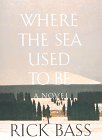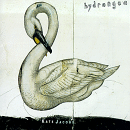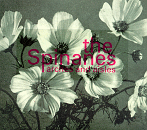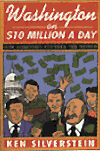THE TOP FIVE Good books about Americans and God
Whether you consider Christianity the opium of the masses, a policy position, or one of the foundations of American identity, there’s no doubting the religious right’s influence on contemporary politics and popular culture. Of course, as Lori Leibovich’s “Generation†“ suggests, sometimes popular culture has just as much influence on religion. Here are five books that give historical context to conservative Christianity’s relationship to the culture at large.—Hans Eisenbeis
 With God on Our Side: The Rise of the Religious Right in America By William Martin. New York: Broadway Books, 1996. 432 pages. $15. A case study in how a fringe element can take control of the national agenda, this companion to the PBS series of the same name and vintage describes the populist phenomenon that began in 1960. The book charts the ascendance of characters such as Jerry Falwell, Ronald Reagan, and Pat Robertson and also tracks the larger movements of the religious right, like the Moral Majority, the Christian Coalition, and the Promise Keepers. It’s a who’s who of fundamentalism—without being overly academic about the why.
With God on Our Side: The Rise of the Religious Right in America By William Martin. New York: Broadway Books, 1996. 432 pages. $15. A case study in how a fringe element can take control of the national agenda, this companion to the PBS series of the same name and vintage describes the populist phenomenon that began in 1960. The book charts the ascendance of characters such as Jerry Falwell, Ronald Reagan, and Pat Robertson and also tracks the larger movements of the religious right, like the Moral Majority, the Christian Coalition, and the Promise Keepers. It’s a who’s who of fundamentalism—without being overly academic about the why.
Religion and the Rise of Capitalism By R.H. Tawney. New Brunswick, N.J.: Transaction Publishers, 1998. 335 pages. $24.95. First published in 1926, Tawney’s book takes Max Weber’s famous essay “The Protestant Ethic and the Spirit of Capitalism” as its starting point and proceeds to identify with surgical precision the theological and social underpinnings of enlightened self-interest. How did personal wealth, social standing, and the ethic of appearances—the solipsism at the center not only of the religious right, but of the whole American experiment—ever come to have spiritual currency and biblical staying power in the modern West? Tawney’s artful treatment goes back to well before the Reformation in tracing the historical preconditions for the religious right.
 The Scandal of the Evangelical Mind By Mark A. Noll. Grand Rapids, Mich.: Wm. B. Eerdmans, 1994. 274 pages. $18. Seeking to reconcile the life of the mind and the needs of the spirit, Noll elegantly celebrates the mental candlepower of early fomenters, such as Jonathan Edwards, Timothy Dwight, and Charles Finney, who toiled just before what Noll calls “the Evangelical Enlightenment.” But reading subsequent chapters devoted to such obvious realities as “the Intellectual Disaster of Fundamentalism,” you can’t help feeling that Noll’s argument for an intellectual evangelicalism is the kind of sophisticated leg-pulling we’ve been tolerating from the left for decades.
The Scandal of the Evangelical Mind By Mark A. Noll. Grand Rapids, Mich.: Wm. B. Eerdmans, 1994. 274 pages. $18. Seeking to reconcile the life of the mind and the needs of the spirit, Noll elegantly celebrates the mental candlepower of early fomenters, such as Jonathan Edwards, Timothy Dwight, and Charles Finney, who toiled just before what Noll calls “the Evangelical Enlightenment.” But reading subsequent chapters devoted to such obvious realities as “the Intellectual Disaster of Fundamentalism,” you can’t help feeling that Noll’s argument for an intellectual evangelicalism is the kind of sophisticated leg-pulling we’ve been tolerating from the left for decades.
 Anti-intellectualism in American Life By Richard Hofstadter. New York: Vintage, 1962. 434 pages. $17. Today, we take it for granted that Americans have never been especially tolerant of the pretensions of the ivory tower. But Hoftstadter wrote this Pulitzer Prize-winning study of anti-intellectualism in the years between McCarthyism and the coming debacle of Vietnam, two especially passionate moments in our past. It’s no accident the book’s second section is titled “The Religion of the Heart”—American social and political institutions have favored the heart over the head since the Mayflower, a preference that was a significant factor in our migration to the New World.
Anti-intellectualism in American Life By Richard Hofstadter. New York: Vintage, 1962. 434 pages. $17. Today, we take it for granted that Americans have never been especially tolerant of the pretensions of the ivory tower. But Hoftstadter wrote this Pulitzer Prize-winning study of anti-intellectualism in the years between McCarthyism and the coming debacle of Vietnam, two especially passionate moments in our past. It’s no accident the book’s second section is titled “The Religion of the Heart”—American social and political institutions have favored the heart over the head since the Mayflower, a preference that was a significant factor in our migration to the New World.
Holy Bible, “I Corinthians” New Revised Standard Version. The religious right’s penchant for quoting the Scriptures can obscure the fact that the Good Book speaks well enough for itself. Educated people on the left often don’t read the Bible enough, and can’t defend themselves adequately against right-wing Christians’ use of Western civilization’s sine qua non text to push a conservative ideology. If you want to meet them on their own terms, this letter from the apostle Paul is a fine place to start. Not only does it contain the famous platitudes on Christian love that have made Hallmark a bundle (“Love is patient, love is kind”), it has its fair share of authentic first-century Pauline theology—the fact that it’s a homophobic and misogynist theology only shows that the Bible is as much a human document as a divine one. Now you’ll just have to convince the fundamentalists that God didn’t write it in English.
REVIEWS
books
 Where the Sea Used to Be By Rick Bass. New York: Houghton Mifflin, 1998. 445 pages. $25. In his first full-length novel, the writer and erstwhile petroleum geologist Rick Bass mines his own history—and an earlier novella of the same name—to recount a tale of oil drilling in a remote Montana valley. The book evokes a powerful nostalgia for an untouched natural landscape; Bass plumbs the depths of his characters’ hearts and pasts rather than the dry well of envirospeak. In doing so, he reveals the twin urges that bubble up from within them—to explore and to exploit the land and its embedded myths. [K.I.]
Where the Sea Used to Be By Rick Bass. New York: Houghton Mifflin, 1998. 445 pages. $25. In his first full-length novel, the writer and erstwhile petroleum geologist Rick Bass mines his own history—and an earlier novella of the same name—to recount a tale of oil drilling in a remote Montana valley. The book evokes a powerful nostalgia for an untouched natural landscape; Bass plumbs the depths of his characters’ hearts and pasts rather than the dry well of envirospeak. In doing so, he reveals the twin urges that bubble up from within them—to explore and to exploit the land and its embedded myths. [K.I.]
 Miss Lonelyhearts and The Day of the Locust By Nathanael West. New York: Modern Library, 1998. 289 pages. $15.50. Fear and Loathing in Las Vegas and Other American Stories By Hunter S. Thompson. New York: Modern Library, 1998. 283 pages. $16. The venerable Modern Library has released two titles perfectly timed for millennium fever (and, in Thompson’s case, for promotion of the film version). Eschatological hand-wringing is the lyrical theme of both West’s The Day of the Locust and Thompson’s well-known fictionalized memoir of a drug-saturated week in Vegas. West explores a love triangle in the crazy-quilt dreamland of Hollywood in the ’30s. His simpleminded hero, Homer Simpson (go ahead: “D’oh!”), stubbornly refuses to recognize the sordidness of his reality, eventually disintegrating like all those who “come to California to die.” Thompson’s journey is less obviously metaphorical, though equally fatalistic. Couched in the hyperbolic antics of “gonzo journalism,” his search for the American Dream—ever lurking one amyl nitrite hit away—would have annihilated lesser mortals. West’s two novellas and Thompson’s gonzo memoir are vicious, beautiful studies of how dreams are packaged and sold, and how strict the return policy is. And hitting “the main nerve,” as Thompson calls it, seeing a true floor model of the American Dream—whether it’s the decadence of Circus-Circus or the savagery of a Hollywood riot—is scarier than any hallucination. [J.A.]
Miss Lonelyhearts and The Day of the Locust By Nathanael West. New York: Modern Library, 1998. 289 pages. $15.50. Fear and Loathing in Las Vegas and Other American Stories By Hunter S. Thompson. New York: Modern Library, 1998. 283 pages. $16. The venerable Modern Library has released two titles perfectly timed for millennium fever (and, in Thompson’s case, for promotion of the film version). Eschatological hand-wringing is the lyrical theme of both West’s The Day of the Locust and Thompson’s well-known fictionalized memoir of a drug-saturated week in Vegas. West explores a love triangle in the crazy-quilt dreamland of Hollywood in the ’30s. His simpleminded hero, Homer Simpson (go ahead: “D’oh!”), stubbornly refuses to recognize the sordidness of his reality, eventually disintegrating like all those who “come to California to die.” Thompson’s journey is less obviously metaphorical, though equally fatalistic. Couched in the hyperbolic antics of “gonzo journalism,” his search for the American Dream—ever lurking one amyl nitrite hit away—would have annihilated lesser mortals. West’s two novellas and Thompson’s gonzo memoir are vicious, beautiful studies of how dreams are packaged and sold, and how strict the return policy is. And hitting “the main nerve,” as Thompson calls it, seeing a true floor model of the American Dream—whether it’s the decadence of Circus-Circus or the savagery of a Hollywood riot—is scarier than any hallucination. [J.A.]
 Gain By Richard Powers. New York: Farrar, Straus & Giroux, 1998. 353 pages. $25. Powers’ sixth novel is a tale of winners and losers in the rise of modern capitalism. The winner is Clare Soap and Chemical Company. Powers chronicles, in a grand and occasionally obtuse Dickensian fashion, the Procter & Gamble-like firm’s 170-year climb from a family soap-making enterprise to a global behemoth that manufactures and markets virtually every sort of consumer product imaginable. The loser in this story of greed is Laura Bodey. A divorced mother of two, she has ovarian cancer that may have been caused by environmental toxins from Clare’s plant in her hometown of Lacewood, Ill. Powers alternates between Bodey’s account and Clare’s to startling effect—Clare’s corporate life spans the history of the republic; Bodey’s is small, intimate, domestic, and contemporary. The novel reaches a level of Pynchonesque paranoia when Laura decides to rid herself of all of Clare’s products, only to realize it’s an impossible task: Clare has infiltrated her life, from the snacks she feeds her kids to the pesticides she uses on her garden. But the lesson of this modern Oedipa Maas is that no vast conspiracy conceals the dreadful subtext of our suburban life—it’s stocked on our supermarket shelves. [J.C.]
Gain By Richard Powers. New York: Farrar, Straus & Giroux, 1998. 353 pages. $25. Powers’ sixth novel is a tale of winners and losers in the rise of modern capitalism. The winner is Clare Soap and Chemical Company. Powers chronicles, in a grand and occasionally obtuse Dickensian fashion, the Procter & Gamble-like firm’s 170-year climb from a family soap-making enterprise to a global behemoth that manufactures and markets virtually every sort of consumer product imaginable. The loser in this story of greed is Laura Bodey. A divorced mother of two, she has ovarian cancer that may have been caused by environmental toxins from Clare’s plant in her hometown of Lacewood, Ill. Powers alternates between Bodey’s account and Clare’s to startling effect—Clare’s corporate life spans the history of the republic; Bodey’s is small, intimate, domestic, and contemporary. The novel reaches a level of Pynchonesque paranoia when Laura decides to rid herself of all of Clare’s products, only to realize it’s an impossible task: Clare has infiltrated her life, from the snacks she feeds her kids to the pesticides she uses on her garden. But the lesson of this modern Oedipa Maas is that no vast conspiracy conceals the dreadful subtext of our suburban life—it’s stocked on our supermarket shelves. [J.C.]
music
 Hydrangea Kate Jacobs. Bar/None, 1998. One of indie rock’s great singer-songwriters, the Hoboken, N.J.-based Jacobs comes off as an urban Victoria Williams: less willfully naive, but still with a keen eye for detail and an ear for melody. Like her earlier records, Hydrangea showcases Jacobs’ literary ambitions—see “Good Doctor,” a heartbreaking honky-tonker in which a woman begs a physician to tend to a dying teenager. The arrangements are occasionally cloying (e.g., children’s choirs), but guitarist Dave Schramm generally shores things up. If the Paula Coles and Shawn Colvins of the world wove tales this compelling, radio would be a better place. [W.H.]
Hydrangea Kate Jacobs. Bar/None, 1998. One of indie rock’s great singer-songwriters, the Hoboken, N.J.-based Jacobs comes off as an urban Victoria Williams: less willfully naive, but still with a keen eye for detail and an ear for melody. Like her earlier records, Hydrangea showcases Jacobs’ literary ambitions—see “Good Doctor,” a heartbreaking honky-tonker in which a woman begs a physician to tend to a dying teenager. The arrangements are occasionally cloying (e.g., children’s choirs), but guitarist Dave Schramm generally shores things up. If the Paula Coles and Shawn Colvins of the world wove tales this compelling, radio would be a better place. [W.H.]
Combustication Medeski Martin & Wood. Blue Note, 1998. Medeski Martin & Wood should really run for office: Any organ trio that can unite avant-jazz chin-strokers, cocktail-onion-sucking lounge aficionados, and tie-dyed boogie children under the same groove could probably do wonders in the political world. Their live electricity doesn’t always translate into their recordings, but Combustication shoots out sparks, jumping from “Sanford and Son” funk to post-bop strutting to abstract groove jams. The real revelations, though, are the tracks with DJ Logic, which explore the rhythmic and harmonic potential of turntable scratching. With side projects for guitarist John Scofield and singer-songwriter Oren Bloedow, among others, these guys are shaping up to be a Booker T & the MGs for the ’90s. [W.H.]
Noon Chill Arto Lindsay. Bar/None, 1998. Brazilian pop can often be judged by the amount of musical grit performers show when offsetting the style’s overripe sentimentality. In this, Arto Lindsay is a master, as he’s proven both in his own work and as producer for superstars like Caetano Veloso and Marisa Monte. The third installment in Lindsay’s loose pop trilogy, Noon Chill maps connections among moody bossa nova, edgy samba, brainy funk, experimental rock, and modern electronic music. If this sounds more like a science project than a pop record, note that this set, like its companions, is refined enough to soundtrack dinner with your grandparents and swoony enough to backdrop a seduction. It’s a small, polyglot pop miracle. [W.H.]
 Arches and Aisles The Spinanes. SubPop, 1998. Rebecca Gates is worth a dozen Liz Phairs. Her throaty purr mulls over fleeting make-out sessions and long-lost loves. It’s the stuff of idle Sundays and long drives, confident and coy in the same breath. With help from post-rock pros John McEntire (of Tortoise) and Sam Prekop (of The Sea and Cake), Gates ornaments her reverb-ridden drums-and- guitar sound with warbly satellite noises and a burbling mellotron, creating a wider sonic expanse than on The Spinanes’ previous albums. When all the sounds come together—as they do on “Reach v. Speed”—Arches and Aisles is perfectly dreamy and refreshingly bittersweet. [I.C.]
Arches and Aisles The Spinanes. SubPop, 1998. Rebecca Gates is worth a dozen Liz Phairs. Her throaty purr mulls over fleeting make-out sessions and long-lost loves. It’s the stuff of idle Sundays and long drives, confident and coy in the same breath. With help from post-rock pros John McEntire (of Tortoise) and Sam Prekop (of The Sea and Cake), Gates ornaments her reverb-ridden drums-and- guitar sound with warbly satellite noises and a burbling mellotron, creating a wider sonic expanse than on The Spinanes’ previous albums. When all the sounds come together—as they do on “Reach v. Speed”—Arches and Aisles is perfectly dreamy and refreshingly bittersweet. [I.C.]
Featuring “Birds” Quasi. Up Records, 1998. Quasi’s carnivalesque pop is pumped along by a wheezy but exuberant roxichord, turning out melodies as catchy and infectious as a merry-go-round medley while singer Sam Coomes deadpans lyrics about spoiled relationships (“The Poisoned Well”), ennui (“The Happy Prole”), and both (“It’s Hard to Turn Me On”). Also in Quasi is Janet Weiss, Coomes’ ex-wife and drummer for riot grrlers Sleater-Kinney. That their creative union has produced work of such brutal if wry emotion creates a halo of irony around the album, throwing into relief its beguiling misanthropy. Despite these grim forecasts, Coomes sings with the crooked smile of someone too amused by life and love’s travails to give up on them entirely. [A.M.C.]
self-reference
 Mother Jones contributing writer Ken Silverstein’s Washington on $10 Million a Day: How Lobbyists Plunder the Nation takes a behind-the-scenes look at D.C., where money is exchanged, backs are scratched, and corporate lobbyists outnumber congressmen 50-to-1.
Mother Jones contributing writer Ken Silverstein’s Washington on $10 Million a Day: How Lobbyists Plunder the Nation takes a behind-the-scenes look at D.C., where money is exchanged, backs are scratched, and corporate lobbyists outnumber congressmen 50-to-1.
Reviews by John Aboud, Ian Connelly, John Cook, Ana Marie Cox, Will Hermes, and Katie Isenberg.















